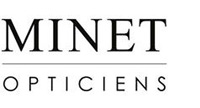
This figure can be compared to market value to determine whether a stock is trading at a premium or discount. This result reflects the total equity interest held by common shareholders, offering insights into the company’s financial standing. Treasury shares are shares repurchased from the open market and held in the company’s treasury. These shares are excluded from earnings per share or dividend calculations. Share repurchases can increase the value of remaining shares by reducing supply or prevent hostile takeovers by decreasing available https://knightsbridgelitigation.com/bookkeeping-9/1-4-rules-of-debit-dr-and-credit-cr-financial-and-2/ voting power.

Equity: Meaning, Formula, How to Calculate & Examples
- The $66.8 billion value in company equity represents the amount left for shareholders if Apple liquidated all of its assets and paid off all of its liabilities.
- Let us consider an example of a company PRQ Ltd to compute the Shareholder’s equity.
- Liabilities are obligations that the company owes to external parties, such as loans, accounts payable, and accrued expenses.
- Total Equity is an important element in various financial ratios, giving insight into a company’s financial health and performance.
- Learning to analyze the D/E ratio well is a skill that aids in making smart investment decisions for long-term success.
- It serves as the backbone of corporate financing and shareholder ownership.
Additional Paid-in Capital (APIC) accounts for the amount shareholders paid for their stock above its par value during initial issuance. For example, if a stock with a $1 par value is sold for $15, $1 is allocated to Common Stock, and the remaining $14 goes to APIC. Total equity is defined as the value of assets minus the value of liabilities, representing the residual claim or ownership stake. This principle applies across different financial contexts, providing a consistent measure of what is truly owned. Total Equity increases when a company retains more earnings, issues new shares, or experiences a rise in asset values.
- Companies in different industries or at different stages of growth may have varying capital structures.
- A lower D/E ratio means we’re financing more conservatively, which reduces financial risk.
- For example, a D/E ratio of 2 means a company gets two-thirds of its funding from debt and one-third from shareholders.
- Current liabilities are debts typically due for repayment within one year.
- For example, industries like utilities and financial services, with high d/e ratios, are more sensitive to economic changes.
What is Owner’s Equity?

In these types of scenarios, the management team’s decision to add more to its cash reserves causes its cash balance to accumulate. If we rearrange the balance sheet equation, we’re left with the shareholders’ equity formula. This means the bakery has $80,000 worth of ownership stake remaining for its shareholders after Travel Agency Accounting accounting for its debts. A company’s equity position can be found on its balance sheet, where there is an entry line for total equity on the right side of the table.
- Total Equity helps show commitment to these practices, allowing a company to make investments in sustainable initiatives and reach long-term profitability.
- A higher equity compared to liabilities generally indicates a stronger financial position.
- This financial metric is typically listed on a company’s balance sheet and is commonly used by analysts to determine the company’s overall fiscal health.
- On the other hand, liabilities are the total of current liabilities (short-term liabilities) and long-term liabilities.
- It can also be calculated as the sum of its share capital and retained earnings, minus its treasury shares.
- Firstly, it serves as a measure of the company’s financial health and stability.
How does total equity differ from net income?
Therefore, the stockholder’s equity of Apple Inc. has declined from $134,047 Mn as at September 30, 2017 to $107,147 Mn as at September 29, 2018. Therefore, the stockholder’s equity of SDF Ltd as on March 31, 20XX stood at $800,000. Therefore, the stockholder’s equity of PRQ Ltd as on March 31, 20XX stood at $140,000. If impairments or adjustments are at fair value, ensure these are thoroughly documented. Regular equity adjustments help maintain transparency and accuracy, which are vital for regulatory adherence and investor trust.

- It helps investors understand the company’s financial health and is a primary factor in various financial ratios, including Return on Equity (ROE) and Debt to Equity Ratio (D/E).
- Treasury Stock refers to shares a company has repurchased from the open market.
- If positive, the company has enough assets to cover its liabilities.
- This formula is known as the investor’s equation where you have to compute the share capital and then ascertain the retained earnings of the business.
The total liabilities figure is presented after these detailed liability total equity formula accounts. For businesses, total equity is shareholder equity or owner’s equity. This represents the residual claim owners have on the company’s assets after all liabilities are satisfied. Shareholder equity reflects capital contributed by investors and accumulated retained profits, indicating the company’s financial strength.



Recent Comments